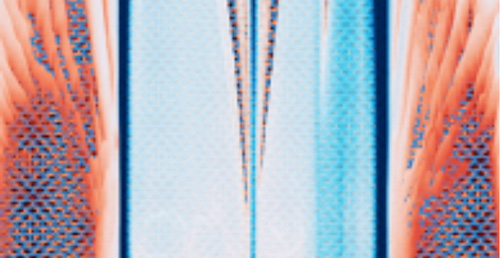| Mar 02, 2021 |
Universal sequence of Chern insulators in superconducting magic angle graphene
(Nanowerk News) A Chern insulator is a 2D insulator which spontaneously breaks time-reversal symmetry and hosts conducting chiral edge states. The study of Chern insulators in the past decade has strongly deepened our understanding of condensed matter and could further lead to the development of low-power-consumption electronics.
|
|
Magic angle twisted bilayer graphene (MATBG) has recently emerged as a rich platform to explore strong correlations, superconductivity and magnetism and band topology.
|
|
In a recent study published in Nature Physics ("Symmetry-broken Chern insulators and Rashba-like Landau-level crossings in magic-angle bilayer graphene"), a team of scientists which includes ICFO researcher Ipsita Das, Xiaobo Lu (former postdoc at ICFO) led by ICFO Prof. Dmitri Efetov, together with colleagues from Princeton (Jonah Herzog-Arbeitman, Zhida Song and B. Andrei Bernevig) and the National Institute for Material Sciences (Kenji Watanabe and Takashi Taniguchi), has reported a full sequence of symmetry broken Chern insulators within the flatbands of magic angle graphene.
|
 |
| Energy spectrum of magic angle moire graphene in magnetic field. (Image: F. Vialla)
|
|
In contrast with traditional Chern insulators which are usually achieved in magnetized topological insulators, the newly discovered Chern insulators in magic angle graphene which only consists of non-magnetic carbon atoms, origin from strong correlation induced symmetry breaking.
|
|
In their experiment, they used magneto-transport technique to measure both longitudinal resistance and hall resistance. They managed to observe Chern insulators with a magic sequence of quantized Hall conductance C = ±1, ±2, ±3, ±4 which nucleate from integer fillings of the moire unit cell = ±3, ±2, ±1, 0 correspondingly.
|
|
The magic sequence and correspondence of Chern numbers and filling factors suggest that these states are driven directly by electronic interactions which specifically break time-reversal symmetry in the system.
|
|
Furthermore, they studied quantum magneto-oscillations in the yet unexplored higher energy dispersive bands of magic angle bilayer graphene. In magnetic field, the energy spectrum shows a rich sequence of level crossings which directly come from the unique Rashba-like dispersion of the bands. Further analysis of the Landau level crossings allowed them to provide constraints on the parameters w0 and w1 of the Bistritzer-MacDonald MATBG Hamiltonian.
|
|
The study provides direct insights into the complex nature of symmetry breaking in MATBG and allows for quantitative tests of the proposed microscopic scenarios for its electronic phases.
|
|
As Ipsita Das, researcher at ICFO and first author of the study says “we were quite stunned when we saw the richness of these new topological states for the first time.” Dr. Xiaobo Lu, former ICFO postdoc and coauthor of this study, additionally comments, “the observation of nontrivial topology in superconducting magic angle graphene is exciting. The integration of strong correlation, superconductivity and Chern insulating phases in magic angle bilayer graphene could lead to new research avenues in the future”.
|
|
Finally, Prof. at ICFO Dmitri Efetov highlights the study by emphasizing that “such achievements mark the next step in the understanding of the amazing properties of twisted bilayer graphene, adding now topology as one of its defining characteristics.”
|

